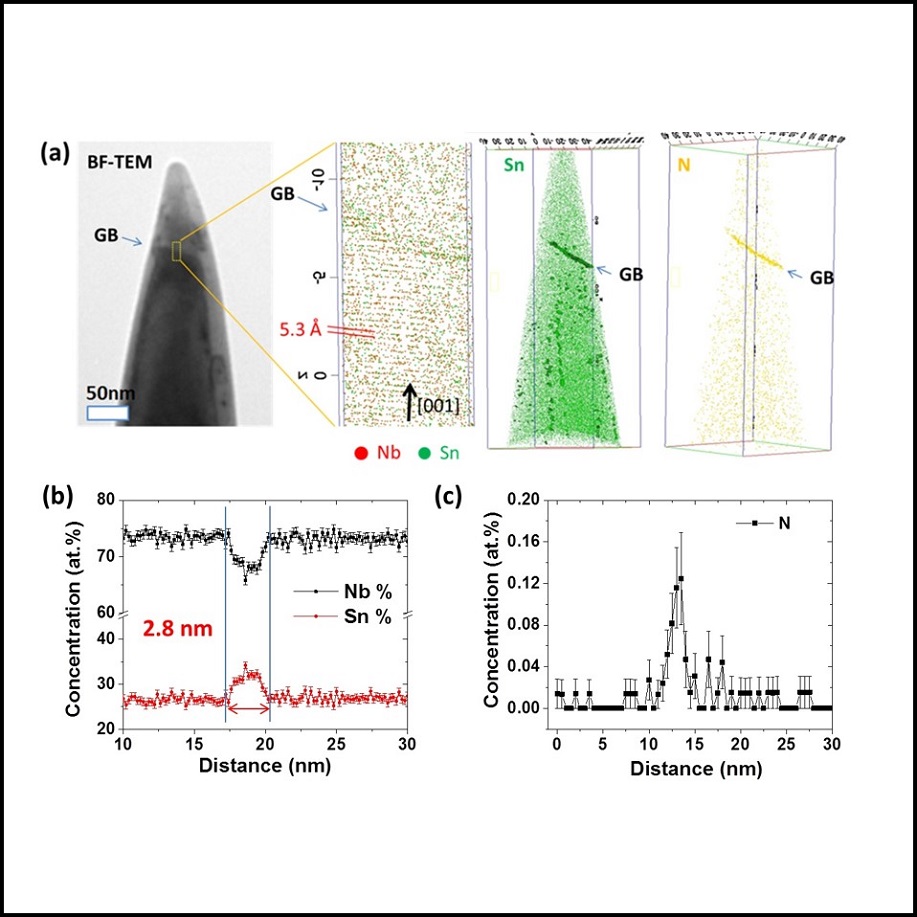Grain-boundary Structure & Segregation in Nb3Sn Coatings
This work was a collaboration between Northwestern, Fermilab, and Cornell to study the grain boundaries of Nb3Sn films for superconducting cavities. Grain boundaries play an important role in Nb3Sn made for superconducting magnet applications. Impurities can segregate at the grain boundaries, pinning magnetic flux in ways that are beneficial for magnet wires. But for superconducting cavities, flux pinning is not so beneficial, and we worry about impurities or compositional inhomogeneities at grain boundaries causing detrimental flux penetration. In this study we looked at Nb3Sn grain boundaries made by Fermilab and by Cornell. We found that grain boundaries in samples from cavities that performed well have no compositional inhomogeneities within uncertainty. On the other hand, grain boundaries in samples from cavities with some performance degradation showed a small excess tin at the grain boundaries. Additional studies are planned to investigate if the excess tin could be a cause for the degradation. We also showed that this excess tin could be avoided by modification of the coating parameters.
Reference:
J. Lee, Z. Mao, K. He, Z. H. Sung, T. Spina, S.-I. Baik, D. L. Hall, M. Liepe, D. N. Seidman, and S. Posen, “Grain-boundary structure and segregation in Nb3Sn coatings on Nb for high-performance superconducting radiofrequency cavity applications,” Acta Materialia, vol. 188, pp. 155–165, Apr. 2020, doi: 10.1016/j.actamat.2020.01.055. Available [Online] https://www.sciencedirect.com/science/article/abs/pii/S135964542030080X

